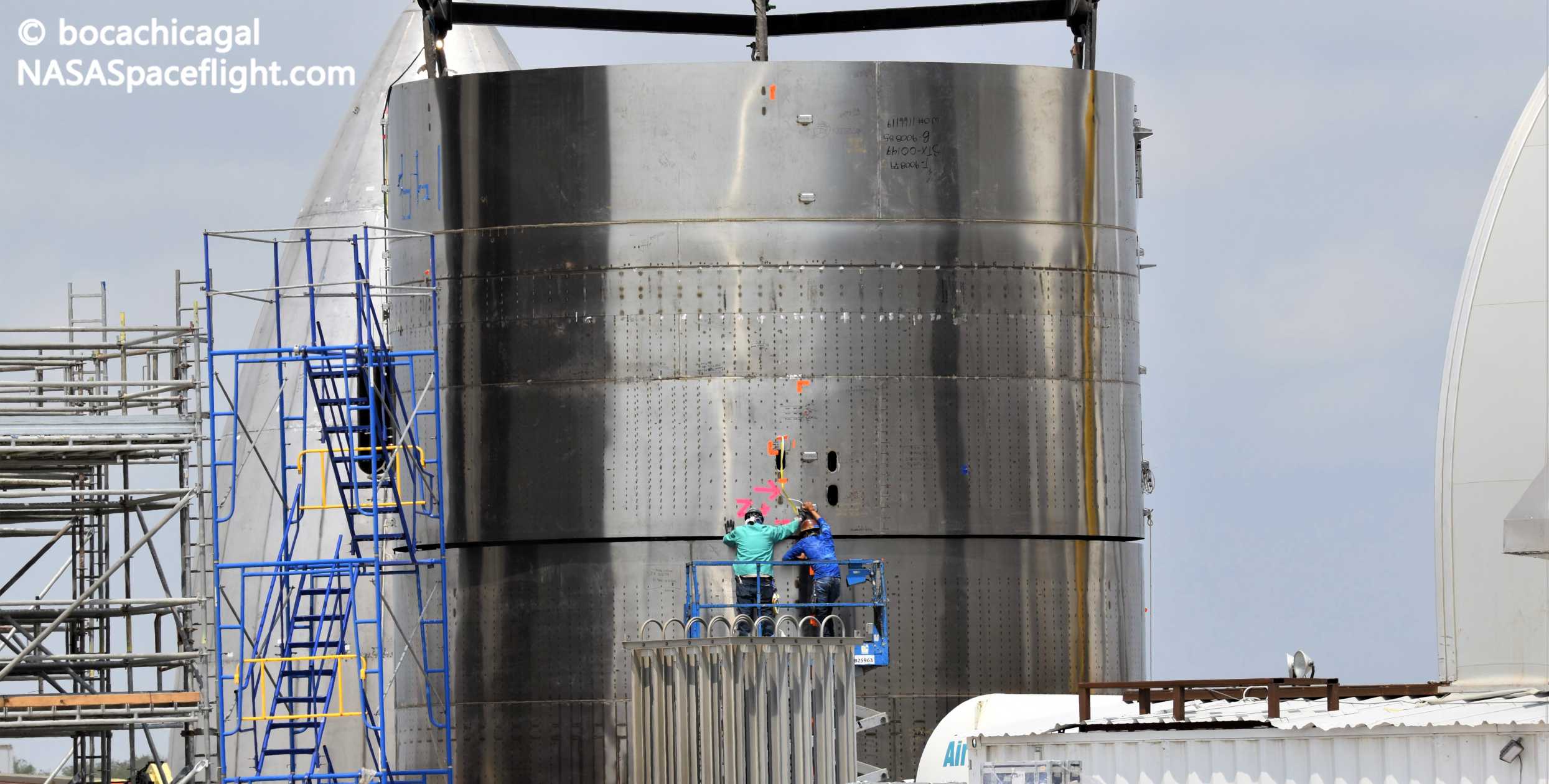
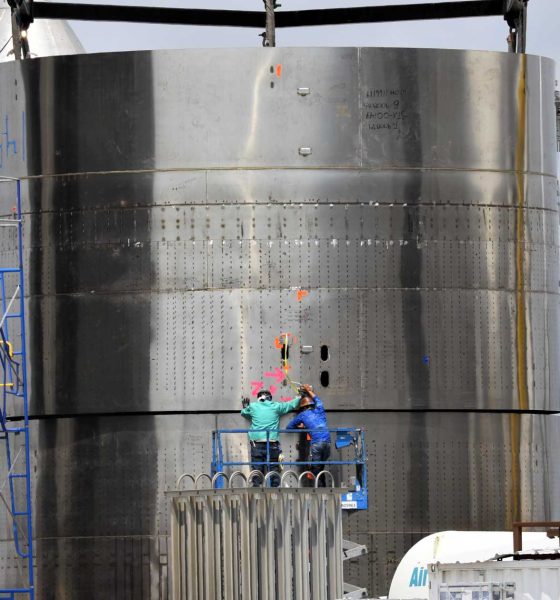
News
SpaceX’s first high-flying, triple-Raptor Starship is almost finished
SpaceX’s first high-flying, triple-engine Starship prototype is rapidly approaching completion at the same time as the company is preparing for the rocket’s predecessor to lift off on its inaugural test flight.
Known as serial number 5 (SN5), it will be the fifth full-scale Starship prototype completed by SpaceX since November 2019 and the fourth since late-January 2020. Following in the footsteps of Mk1, SN1, SN3, and SN4, SpaceX CEO Elon Musk has recently stated that Starship SN5 will be the first prototype to have three Raptor engines and a nosecone installed and could be the first to be outfitted with new and improved aerodynamic control surfaces.
In the meantime, Starship SN4 is perhaps less than 30 hours away from performing a third Raptor static fire test, potentially paving the way for the biggest challenge yet for a full-scale Starship prototype: powered flight. Scheduled no earlier than 9am CDT (14:00 UTC), May 13th, Starship SN4’s next static fire is meant to ensure that a replacement Raptor engine is functioning properly. If successful, the building-sized rocket will effectively be ready to attempt its first launch – also a first for the Starship program overall – pending FAA approval.
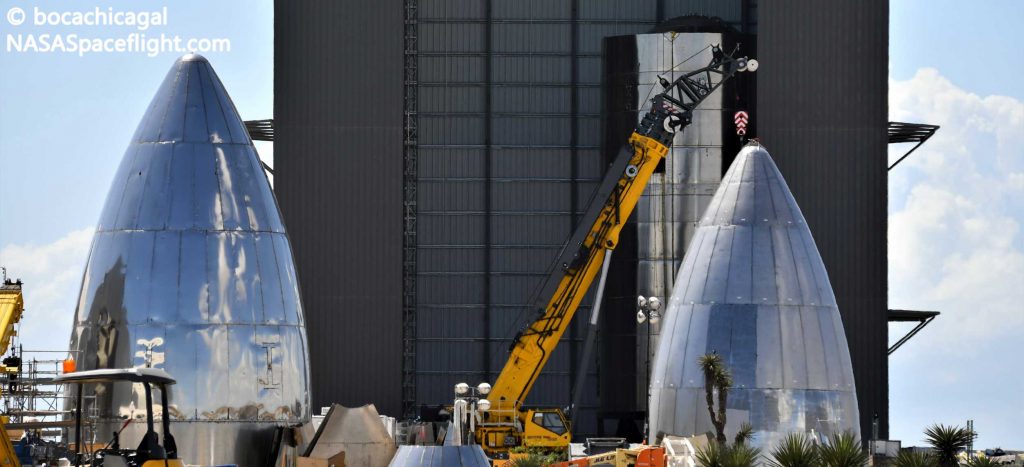
As illustrated in the unofficial diagram above, nearly all of the individual sections that will make up Starship SN5 appear to be more or less complete, excluding some ambiguity added by the interchangeable nature of some of the steel rings all Starships are built out of. For the current design and assembly strategy, Starships are comprised of eight separate sections, themselves made up of stacks of 2-4 steel rings. Altogether, excluding the conical nose section, a single Starship requires approximately 20 of those ~1.8m (6 ft) tall steel rings to reach its full height.
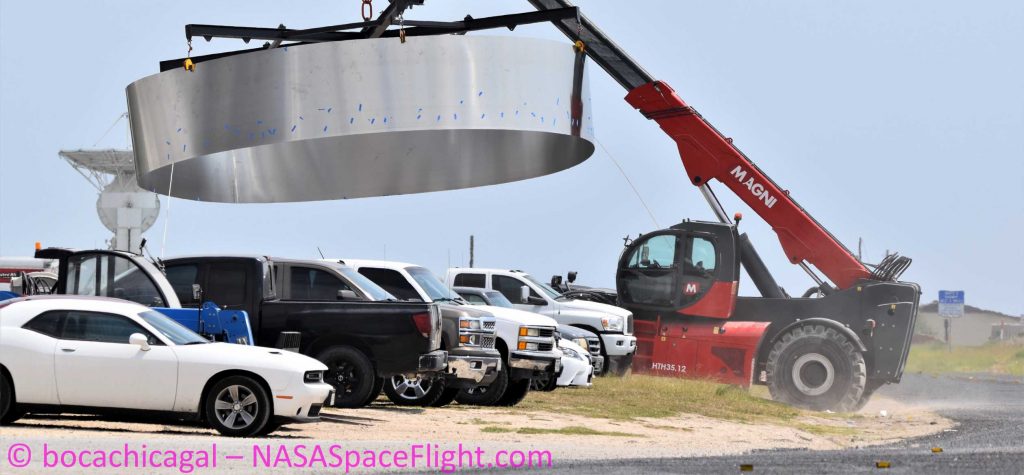
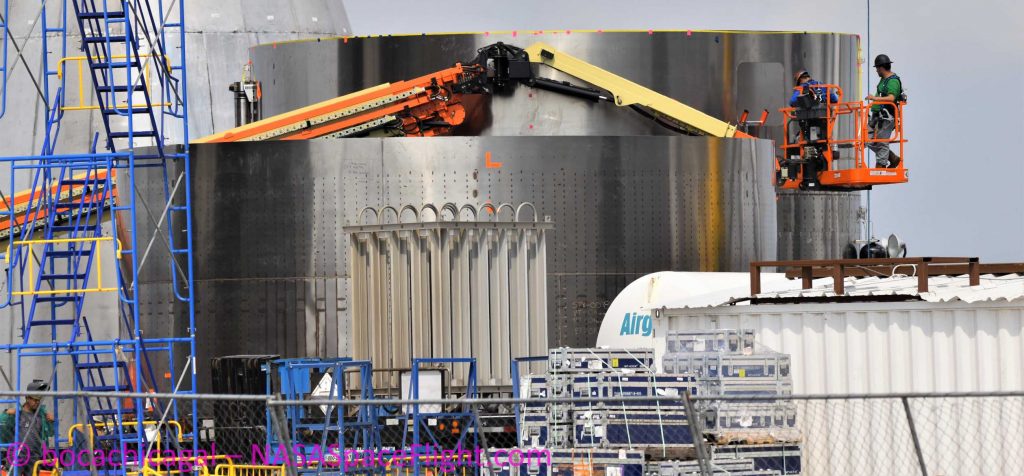
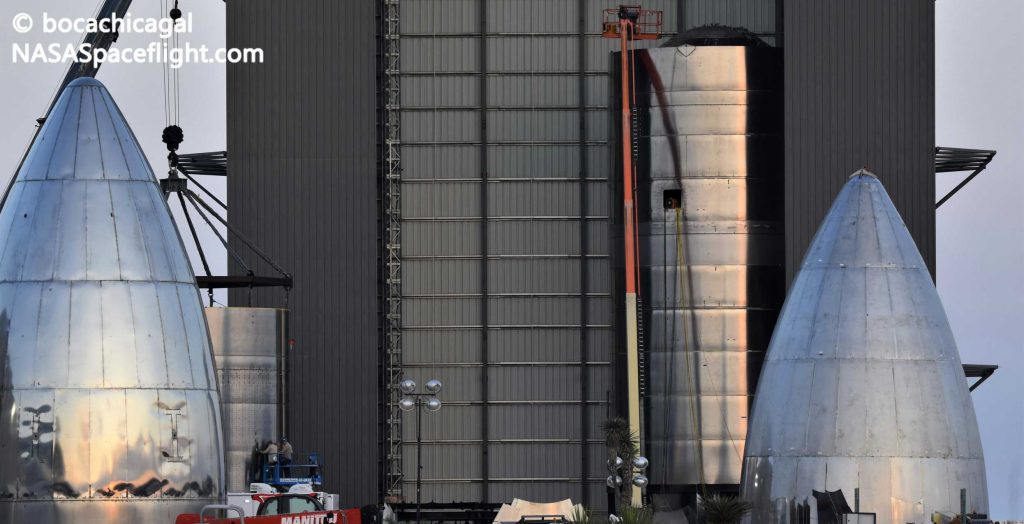
Currently, SpaceX has been focused on testing just the tank section of Starship prototypes, representing the vast majority of the technical challenges that must be solved to fully realize the next-generation launch vehicle’s ambitions. Excluding a smaller secondary liquid oxygen tank situated in the tip of Starship nosecones, the nose section is effectively irrelevant – putting the cart before the horse – until Starship tank sections are more of a known quantity.
When that would be the case was entirely up in the air until just the last week or so, when Starship SN4 became the first full-scale prototype to pass a cryogenic proof test, perform a wet dress rehearsal (WDR) with real propellant, complete static fire(s) with a Raptor engine installed, and – finally – pass a more challenging cryogenic pressure test in quick succession. With those milestones passed for the first time ever, SpaceX has effectively proven that it’s solved the what is arguably the most unprecedented aspect of its Starship program: building orbital-class pressure vessels for pennies on the dollar on the South Texas coast.
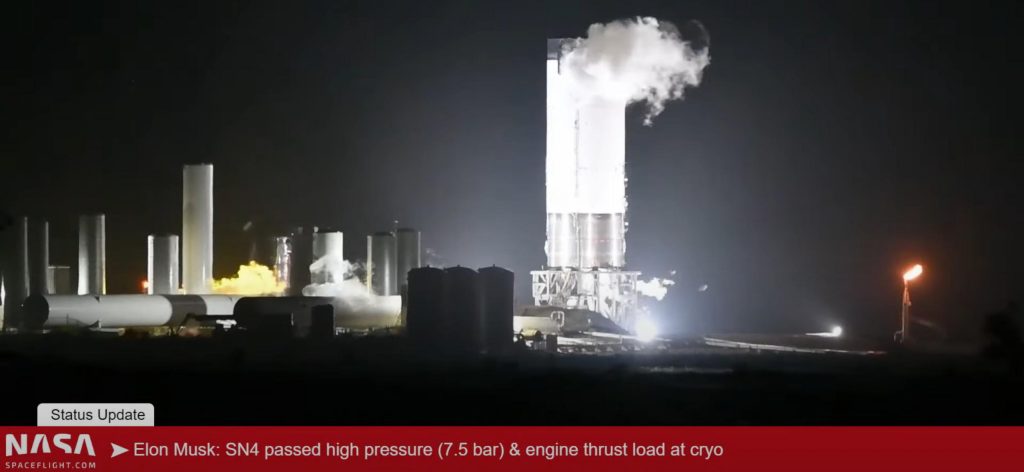
Of course, doing it once with Starship SN4 is not the same as fully confirming that SpaceX’s extremely exotic South Texas rocket factory is capable of producing repeatable results with future rockets. While incredibly improbable, Starship SN4’s multiple successes could be a fluke. Additionally, as Musk has noted, the goal is to complete two entire Starships every week once the factory is fully optimized. SpaceX has already achieved a monthly production rate for its current line of prototypes, an extremely encouraging sign for the practicality of Musk’s stretch goal.
In the prototype stage, that speed of production has been incredibly useful, enabling SpaceX to move at a pace of launch vehicle development almost unheard of since NASA’s Apollo Program. At the moment, Starship SN4 has passed all tests thrown at it so far and will soon be attempting the riskiest Starship test yet with its inaugural hop attempt. If the ship were to be destroyed, one would traditionally expect a bare minimum of a few months of program delay. Instead, Starship SN5 could be more or less complete even before SN4 receives FAA permission for its first flight, meaning that a replacement will already be ready to roll to the launch pad if or when SN4 is destroyed.

In a best-case scenario, if Starship SN4 continues to pass the tests thrown at it, including one or several hops, SpaceX will instead be entering a new phase indicative of what’s to come: the concurrent testing and operation of a fleet of Starships. A step further, if Starship SN4 succeeds, Starship SN5 appears to be on track to become the first prototype to have a full three Raptor engines and a nosecone installed, as well as the first to attempt a high-altitude (20 km/12 mi) flight test.

News
Tesla FSD fleet is nearing 7 billion total miles, including 2.5 billion city miles
As can be seen on Tesla’s official FSD webpage, vehicles equipped with the system have now navigated over 6.99 billion miles.

Tesla’s Full Self-Driving (Supervised) fleet is closing in on almost 7 billion total miles driven, as per data posted by the company on its official FSD webpage.
These figures hint at the massive scale of data fueling Tesla’s rapid FSD improvements, which have been quite notable as of late.
FSD mileage milestones
As can be seen on Tesla’s official FSD webpage, vehicles equipped with the system have now navigated over 6.99 billion miles. Tesla owner and avid FSD tester Whole Mars Catalog also shared a screenshot indicating that from the nearly 7 billion miles traveled by the FSD fleet, more than 2.5 billion miles were driven inside cities.
City miles are particularly valuable for complex urban scenarios like unprotected turns, pedestrian interactions, and traffic lights. This is also the difference-maker for FSD, as only complex solutions, such as Waymo’s self-driving taxis, operate similarly on inner-city streets. And even then, incidents such as the San Francisco blackouts have proven challenging for sensor-rich vehicles like Waymos.
Tesla’s data edge
Tesla has a number of advantages in the autonomous vehicle sector, one of which is the size of its fleet and the number of vehicles training FSD on real-world roads. Tesla’s nearly 7 billion FSD miles then allow the company to roll out updates that make its vehicles behave like they are being driven by experienced drivers, even if they are operating on their own.
So notable are Tesla’s improvements to FSD that NVIDIA Director of Robotics Jim Fan, after experiencing FSD v14, noted that the system is the first AI that passes what he described as a “Physical Turing Test.”
“Despite knowing exactly how robot learning works, I still find it magical watching the steering wheel turn by itself. First it feels surreal, next it becomes routine. Then, like the smartphone, taking it away actively hurts. This is how humanity gets rewired and glued to god-like technologies,” Fan wrote in a post on X.
News
Tesla starts showing how FSD will change lives in Europe
Local officials tested the system on narrow country roads and were impressed by FSD’s smooth, human-like driving, with some calling the service a game-changer for everyday life in areas that are far from urban centers.

Tesla has launched Europe’s first public shuttle service using Full Self-Driving (Supervised) in the rural Eifelkreis Bitburg-Prüm region of Germany, demonstrating how the technology can restore independence and mobility for people who struggle with limited transport options.
Local officials tested the system on narrow country roads and were impressed by FSD’s smooth, human-like driving, with some calling the service a game-changer for everyday life in areas that are far from urban centers.
Officials see real impact on rural residents
Arzfeld Mayor Johannes Kuhl and District Administrator Andreas Kruppert personally tested the Tesla shuttle service. This allowed them to see just how well FSD navigated winding lanes and rural roads confidently. Kruppert said, “Autonomous driving sounds like science fiction to many, but we simply see here that it works totally well in rural regions too.” Kuhl, for his part, also noted that FSD “feels like a very experienced driver.”
The pilot complements the area’s “Citizen Bus” program, which provides on-demand rides for elderly residents who can no longer drive themselves. Tesla Europe shared a video of a demonstration of the service, highlighting how FSD gives people their freedom back, even in places where public transport is not as prevalent.
What the Ministry for Economic Affairs and Transport says
Rhineland-Palatinate’s Minister Daniela Schmitt supported the project, praising the collaboration that made this “first of its kind in Europe” possible. As per the ministry, the rural rollout for the service shows FSD’s potential beyond major cities, and it delivers tangible benefits like grocery runs, doctor visits, and social connections for isolated residents.
“Reliable and flexible mobility is especially vital in rural areas. With the launch of a shuttle service using self-driving vehicles (FSD supervised) by Tesla in the Eifelkreis Bitburg-Prüm, an innovative pilot project is now getting underway that complements local community bus services. It is the first project of its kind in Europe.
“The result is a real gain for rural mobility: greater accessibility, more flexibility and tangible benefits for everyday life. A strong signal for innovation, cooperation and future-oriented mobility beyond urban centers,” the ministry wrote in a LinkedIn post.
News
Tesla China quietly posts Robotaxi-related job listing
Tesla China is currently seeking a Low Voltage Electrical Engineer to work on circuit board design for the company’s autonomous vehicles.

Tesla has posted a new job listing in Shanghai explicitly tied to its Robotaxi program, fueling speculation that the company is preparing to launch its dedicated autonomous ride-hailing service in China.
As noted in the listing, Tesla China is currently seeking a Low Voltage Electrical Engineer to work on circuit board design for the company’s autonomous vehicles.
Robotaxi-specific role
The listing, which was shared on social media platform X by industry watcher @tslaming, suggested that Tesla China is looking to fill the role urgently. The job listing itself specifically mentions that the person hired for the role will be working on the Low Voltage Hardware team, which would design the circuit boards that would serve as the nervous system of the Robotaxi.
Key tasks for the role, as indicated in the job listing, include collaboration with PCB layout, firmware, mechanical, program management, and validation teams, among other responsibilities. The role is based in Shanghai.
China Robotaxi launch
China represents a massive potential market for robotaxis, with its dense urban centers and supportive policies in select cities. Tesla has limited permission to roll out FSD in the country, though despite this, its vehicles have been hailed as among the best in the market when it comes to autonomous features. So far, at least, it appears that China supports Tesla’s FSD and Robotaxi rollout.
This was hinted at in November, when Tesla brought the Cybercab to the 8th China International Import Expo (CIIE) in Shanghai, marking the first time that the autonomous two-seater was brought to the Asia-Pacific region. The vehicle, despite not having a release date in China, received a significant amount of interest among the event’s attendees.








